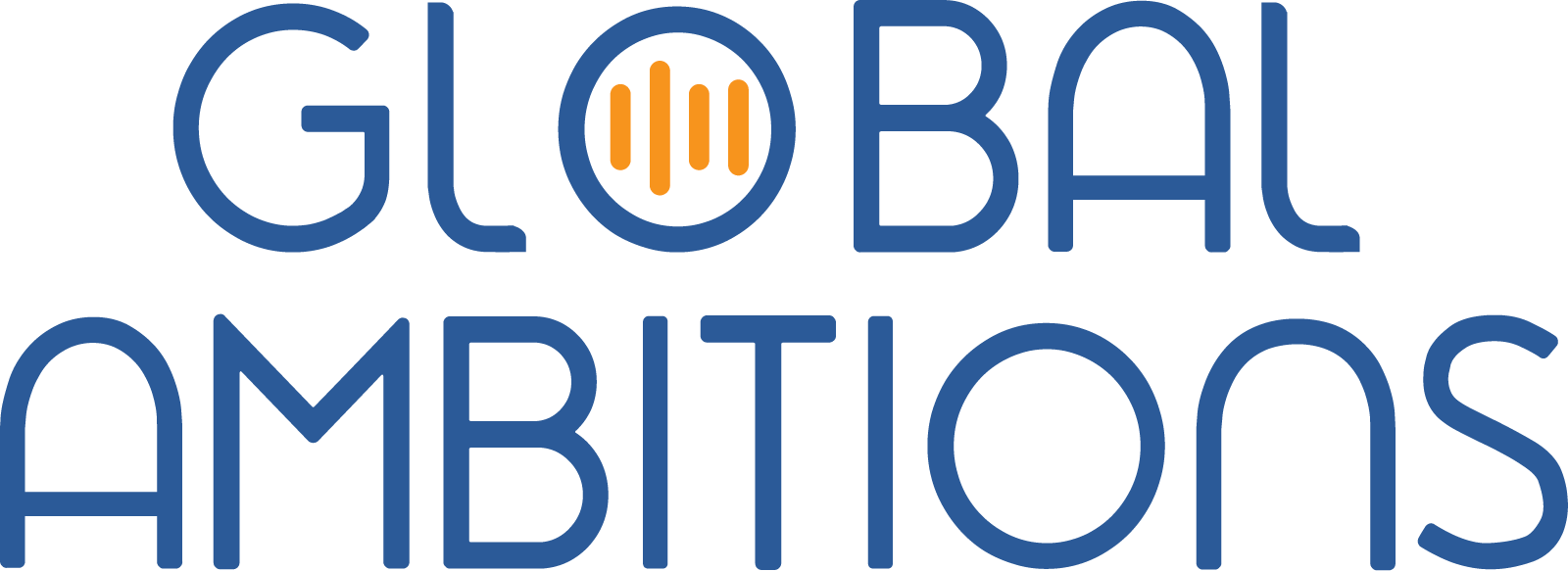With Minette Norman, Leadership Consultant
Below is a full transcript of this episode.
Antoine Rey
Hi, I’m Antoine Rey. And I’ll be your host today for this global ambitions podcast episode. And my guest today is a returning guest, Minette Nomen. Minette is an author, speaker and consultant who focuses on work on inclusive leadership. Before starting her own consulting business, and that’s what we talked about in our last podcast, she spent 30 years in the software industry, starting out as a technical writer and ended up as VP of Engineering at Autodesk, where she also led a large localization team. Minette, welcome back to the program.
Minette Norman
Thank you for having me, Antoine. I’m happy to be back.
Antoine Rey
So today, we completely leave localization behind and it’s going to be a very different podcast for us there. And we’re going to be talking about inclusive leadership. And I understand you have an upcoming book about this topic leading with empathy. Can you maybe tell us some of the key points you want your readers to consider about those aspects of your book?
Minette Norman
Yeah, I’m happy to. So I have a book coming out in August, called The Boldly Inclusive Leader. And it is informed by those 30 years that I spent in the tech industry, because what I learned both as an employee of other managers, and being a manager and a leader myself is that we really are not trained well as managers, as leaders to lead inclusively. And what I mean by that is, you know, there’s lots of talk about diversity and hiring a diverse workforce. But what does it mean to truly embrace all the diversity that you have in your team and make sure that every person no matter who they are, no matter where they are in the world, no matter what their background is, that every person feels that they have a voice, that their voice is heard and respected, and that they can fully participate just as much as anyone else can.
And unfortunately, Antoine, you’ve probably seen this in your work, I’ve definitely seen it in my work. What often happens, what happens by default, is that we’re drawn… First of all, we’re drawn to people who are the most like us, we listen to the people who are the most like us, we get into this conformity bias, where we all agree, and it’s a very homogeneous group. And we don’t actually give any credence to the people who may be challenging us, we don’t pay attention to the quiet person in the room who probably has something to say, but doesn’t find a way into the conversation. And we are missing out on huge things.
And you know, some of that is innovation, some of that is seeing risks that we might not otherwise see. Some of it is the crazy ideas that we’re not thinking of, because we don’t think in this different way. And so I really believe that managers at any level, whether they’re a first time manager, or they’re CEO, can learn something from what I’ve included in the book. And you know, you mentioned empathy. I know I’ve talked about empathy in the past, empathy is one piece of being an inclusive leader, because really, we have to try to understand what other people are feeling and experiencing, even if we’ve never had those same experiences, even if we don’t agree with the other person.
But these are very important for us to really start to understand, we can’t walk in someone else’s shoes, but we can try to feel what they’re feeling we can do our best. And so empathy is a piece of that. Listening is a piece of it, self-awareness, as a leader as a piece of that. And then creating conditions where everyone can speak up. That’s the psychological safety and team dynamics.
So I cover all of that, and a lot more in my book. And it’s, as I said, informed by my own experiences. And so although I reference, you know, academic studies and other writers, a lot of it is my own stories and stories of people I’ve known.
Antoine Rey
And I remember, yeah, in our last podcast, you mentioned when you got appointed as the VP of engineering there, they gave you a 90-day trial, and one of the comments by the SVP at the time was like, Well, you know, how are you going to get on because this is a boys club out there? So I guess you’re very well placed to discuss that.
Minette Norman
Totally. And yeah, I told that story before, because I think when people hear that story, they kind of have this, whoa, moment of like, really, you had to go through that you had to go through this basically trial tral period. And it was about being accepted. And maybe I told you before, but one of the things that I think was so rewarding about that, even though it was really hard and challenging to go through this 90-day period of like, am I going to be accepted, but several people told me that the reason they thought I should have this job is because I came with a different perspective. And I came with a different background, and that we really did need change. And when you need to go through big change and transformation, you probably need someone who thinks differently from the group think and the way that everyone else thinks and so I think that’s why I got that job. And it’s also why, you know, I can’t say that I solved every problem, but I did make some big strides for the company. Because I was thinking really differently about the problem.
Antoine Rey
We both worked for a lot of people in our careers. And what’s the opposite type of leadership, opposite to leading with empathy and inclusion? What’s the opposite type? And why is that accepted and adopted these days?
Minette Norman
It’s such a good and deep question. Because I think, well, when you think about it, like many of our leadership models, the way we think about how leaders should behave, go back to probably when we first had the Industrial Revolution, and we were automating things, and it was about getting everything done super efficiently. And so the leadership style was, this is what you need to do this is how to be efficient. It’s command, it’s control. It’s like, stay in your box, do only what you’re told to do. And you know, that probably worked when we were going through that time in history.
But now, I mean, this is the information age, this is an age, when you need creativity, you need innovation, you need breakthrough ideas. And that’s not going to come from this command and control. Like I, as the leader, know everything, and I’m going to tell you what to do. And you sit back and accept that, and you do your work. That no longer serves us. But you know, there are definitely leaders out there still like that. And you know, there’s obviously one who’s been in the news a lot lately, when you think about Elon Musk, he says, I want hardcore people, I’m going to tell you what you have to do, and you do it.
So what worries me a little bit is that, you know, we’ve been seeing so many tech companies, especially going through layoffs right now. And some of them are saying like, I actually saw a quote from Marc Benioff from Salesforce saying something like maybe we need to embrace our Elon Musk a little bit more. That actually worries me because I feel like we can’t swing back to that. That is what destroys employee morale. It’s what destroys creativity and innovation. And it makes people who feel maybe I don’t fit in here, they’re like, I’m out of here, I don’t want to work for a leader like that. I want to work in an environment where I can do my best work and where I can fully be appreciated and contribute. And that’s not gonna happen when we have those leaders who say, this is what I’m ordering you to do. You know, shut up, do your work or get out of here. Well, that’s not going to bring out the best. So I think the you know, there is still some of that.
But I would, I would stay on the optimistic side, in my belief that more leaders than not do believe that they want to bring out the best in their employees, and they want everyone to really do fantastic work. What they don’t know is perhaps what do they need to do as an individual that can impact the quality of work life for someone, and I really think it’s often small behaviors done consistently, that can make a huge difference. It’s not that you have to change everything about what you’re doing. But you probably need to really develop your own self awareness as a starting point to see how are people seeing me? How am I coming across? How am I communicating? How am I listening? How am I reacting? If someone does challenge me, all of these things are really important leadership behaviors that can either sort of make or break that inclusive environment,
Antoine Rey
I do a lot of work with the HR world, like HR software organizations, as well as HR departments, it seems like in the last 20 years, there’s been a lot more attention to… it’s like the age of the employee, as opposed to be in the age of the employer or the consumer before that, you know, and we suddenly see a lot of progress in that sense. And maybe it’s a function of my ages, where I wouldn’t be as tolerant towards certain leaders that now that I’m over 50, as opposed to when I was 20, I guess, you know, but certainly the younger generation seem to be also really driven towards who they work for, and the kind of culture and the kind of mentality, and the kind of inclusion and diversity that they bring to those organizations.
That certainly seems to be one of the recruitment criteria these days, and why certain people choose an organization. So certainly from a talent, attraction perspective, people will consider that, but beyond doing what the decent human being would do, are there other aspects of that you think are important for an organization to be more inclusive and empathetic in their leadership style?
Minette Norman
Well, I think, you know, I want to go back to what you just said about younger generations, certainly Gen Z, you hear about this, like, what is foremost for them is that we work in an environment that is inclusive, where I can bring my full self to work and where I care about the culture. And so I don’t want to underestimate that as both an employee attraction in terms of hiring and retention tool, that you really do have to pay attention to this today.
You can’t get away with an abusive, toxic environment. You hear a lot about toxic bosses and toxic environments, and people are not tolerating that anymore. And so I think that’s really important. But you know, beyond that, like certainly, if toxicity is the lowest like not toxic is the low bar right? You want to go much higher than that.
And I think there’s a little misconception like people think, okay, if I stopped being so authoritative, and if I really invite everyone to speak up, and I’m super inclusive, that means that I can’t hold people to standards, I can’t enforce goals and things like that, and that it’s going to be an anything goes kind of environment. And I think that’s where leaders get a little bit nervous about, I don’t know how to do this, I don’t know how to control this. I am not the only one to talk about this. But it’s really important to understand that being inclusive and creating a safe environment does not mean you can’t do hard things. It doesn’t mean that we no longer do performance management. And we’ll never have a layoff like it’s not that we operate in a bubble, we’re not in this protective bubble where nothing bad ever happens.
But instead, we can just be more human at work, we can be more honest at work about what’s going on. And people feel then like, Okay, if my leader can admit that they don’t know everything, and that they’re human, they’re fallible, they are an imperfect human being just like everyone else, then I am more likely to show up that way. And I’m more likely to ask a question.
You know, I mean, I remember and you’ve probably been in these situations, you’re sitting in a room at a meeting, and you know, maybe there are a bunch of high powered executives there. And you really do have a question, or you maybe even want to challenge something, but there’s no way, you’re gonna even raise your hand or open your mouth, because it just feels like, I’m going to be embarrassed, I’m going to be shut down, people are going to look at me, like, Who’s that crazy person asking that question? And in fact, what you really need is permission to ask those questions.
Because, honestly, your leader probably hasn’t thought of everything. No one can think of everything. So we just need to create those conditions. And so I always want to encourage every manager and leader that you’ll probably get uncomfortable in this process of changing your leadership style as you try to become less of the command and control leader and more of the inclusive leader, because it’s going to take you out of the things that you’ve known and learned about leadership.
And so for example, making a mistake and admitting that you’ve made a mistake, as a leader can be a really, really vulnerable and hard thing to do. But it’s also I think, what makes you stronger, is to admit that we’re all human. And if you make a mistake that you can learn from it, you can share what you’ve learned. And therefore you’re then creating the conditions where everyone else can do the same.
And I think this is really important, especially when we think about like the digital age and digital companies who, you know, we only think about, for example, software outage or a security breach or something like this, which is, you know, of course top of mind, for tech companies, the companies that are going to be the most successful are the ones who can say, we’ve had a problem, we’ve had a bug we’ve had, you know, a breach, we need to talk about it, we need to learn from it, we need to be open about it.
It’s not blaming or pointing fingers or shaming. It is what do we learn from this? What do we do differently? And people will not have those open conversations if they feel that, you know, they’re going to be punished for speaking up.
So that’s the job of the manager and leader to really evolve their thinking about what is leadership behavior? And how do I invite all the voices? Well, you have to find ways to bring everyone out, you know, actually call on people or if that’s uncomfortable, you find asynchronous ways for people to contribute their ideas, in ways that they feel comfortable, that you really want to tap into what I think is the collective genius, which is the whole is greater than the sum of the parts.
Antoine Rey
It’s something we’ve learned in management to start as well to show some level of vulnerability as you mentioned, I think, early on there. And if you learn how to do that, I think this is where people are going to start to see that more inclusive leadership. But it’s probably a little bit more difficult for some cultures or that I’ve not learned from versus like, I had to be more inclusive like this and to show vulnerability is not in their DNA.
Minette Norman
That’s really true. And I actually… this is one of the areas I would love to learn more about. I do not consider myself an expert at all. I’ve certainly, you know, having worked internationally for decades, I have learned a lot about different cultures. And I know, for example, in certain cultures that are more hierarchical, it is just anathema for a leader to do some of the things I’m talking about, like admit faults or admit mistakes.
And it’s also anathema for an employee to challenge someone who’s in a higher hierarchical level. But how can even in cultures like that, can we move the needle somewhat? So like I know, you can’t challenge you know, 1000s of years of culture and change everything. But there has to be a way to is little by little take small actions that can change that kind of behavior.
It was really interesting. I was doing a workshop with a team on psychological safety. And one of the leaders was from India. And he said Minette, I cannot get my team to challenge me. I can’t even get them to stop calling me Mr. So what do you suggest, you know, and we were just trying to brainstorm. So this is an area I would actually love to collaborate and learn from people around the world about how are you making a change in what leadership looks like in different cultures where especially where hierarchy is so deeply ingrained?
Antoine Rey
Right, exactly. Yeah. And that’s your book about psychological safety that really overlaps with inclusive leadership, then?
Minette Norman
Totally. So it is a very important piece of inclusive leadership. And in fact, in my book that comes out in August, there’s a chapter on psychological safety. And I think they are intrinsically linked because psychological safety is this belief that in this group, it’s safe to ask a question or take a risk or make a mistake without fear of exclusion or embarrassment, or humiliation even.
So, it is to me fundamental that you don’t get to an inclusive culture unless you create a psychologically safe environment where people can raise their hand and ask that question or share a dissenting viewpoint. I sort of think that psychological safety comes first, and then inclusion, but I don’t think you get to one or the other alone.
Antoine Rey
Fabulous. Well, we’ll be talking a lot more about this over the next few months. And we’re going to run like a different episode with Natalie Kelly, who’s coming out with a book as well, about how to grow a global business. And we will be organizing a webinar at some stage with you guys in September, or October. Looking forward to the book when it’s coming out. And I think a lot of people should be reading this.
Minette Norman
I hope so. I certainly hope so. I wanted to find as broad an audience as possible. Because I think, really, that you know, you can make a big difference, even with small changes, and it’s just the willingness to try something new. And to say like, Let’s experiment.
Antoine Rey
Thanks so much for joining us again, and we look forward to talking to you again very soon.
Minette Norman
Thanks for having me on. It’s always a pleasure.





